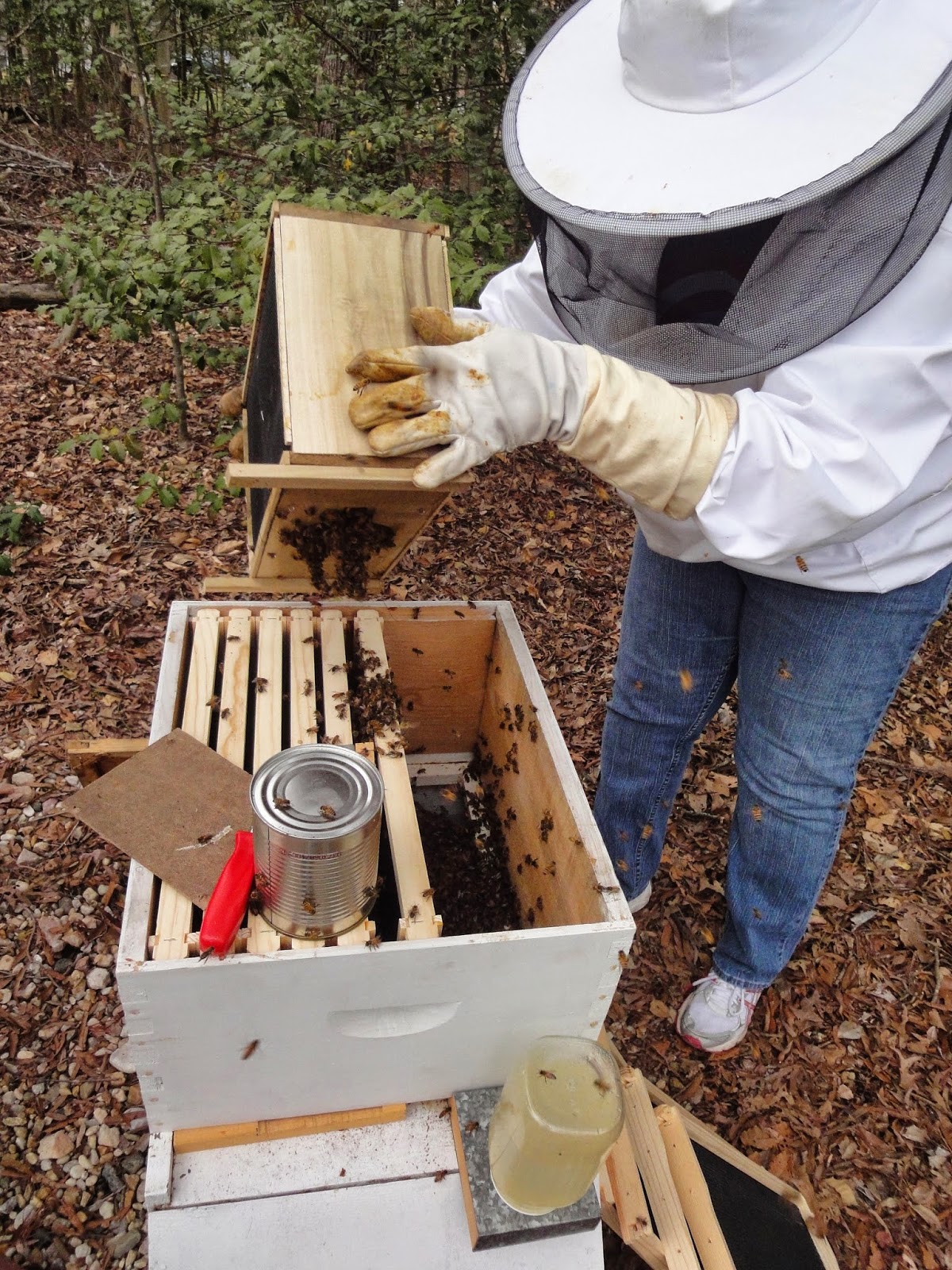 |
| Queen cells first spotted 7 days ago. |
So did a quick look for the queen on the other frames and found more open queen cells... a total of six more that I didn't see the last week! (Not wanting to disturb the hive more than I needed to, I only checked the one frame and closed the hive back up after finding the two queen cells.)
 |
| Capped Queen Cell |
I'll check back in another week to see if the queen has mated and has begun laying.
For some unknown reason, the queen in the package hive is gone. Did she die or or decided the hive was not fit for her queenliness we'll never know, but left behind were about 100 bees drawing a bit of comb and storing the syrup. I knew this as of four days ago and after giving it much thought I decided to do another split from the very full Dmitry hive in order to give the Beagle hive a fresh start and give the Dmitry hive some relief.
The Dmitry hive is seven boxes full of bees, too full according to them and they were preparing for some of them to leave. We stopped counting at seven swarm cells and that doesn't include those that were destroyed when I lifted the boxes apart. Swarm cells are constructed along the bottom of the frame which differentiate them from other queen cells built higher on the frame like those in the Datsyuk hive. Swarming is a natural part of the growth of a hive but it can also weaken the hive and I was banking on being able to draw from this strong hive to help the others if needed.
 |
| Swarm Cells Split to the Beagle Hive |
I used the abundance of queens to move some over to the Beagle hive, along with a couple frames of brood and a large number of bees to jump start that hive again. Some seasoned beekeepers say that a hive will swarm when its ready to swarm regardless of what may be done to prevent it, like lessening the population like I did making the split. I can't help but wonder if the queen that hatches in the Beagle hive will be inclined to lead the hive to swarm because that is what she was intended to do in her old hive.
Have you realized what is happening now in the apiary? All three of my hives have queen cells, soon to have virgin queens and not one of them will have eggs from which to make a new queen if any of these queens fail. I know I'm taking a big chance, one that may or may not pay off in honey this year. But if I end up with one viable hive, I'll be satisfied, as well as so much smarter from the mistakes I've made this spring!










